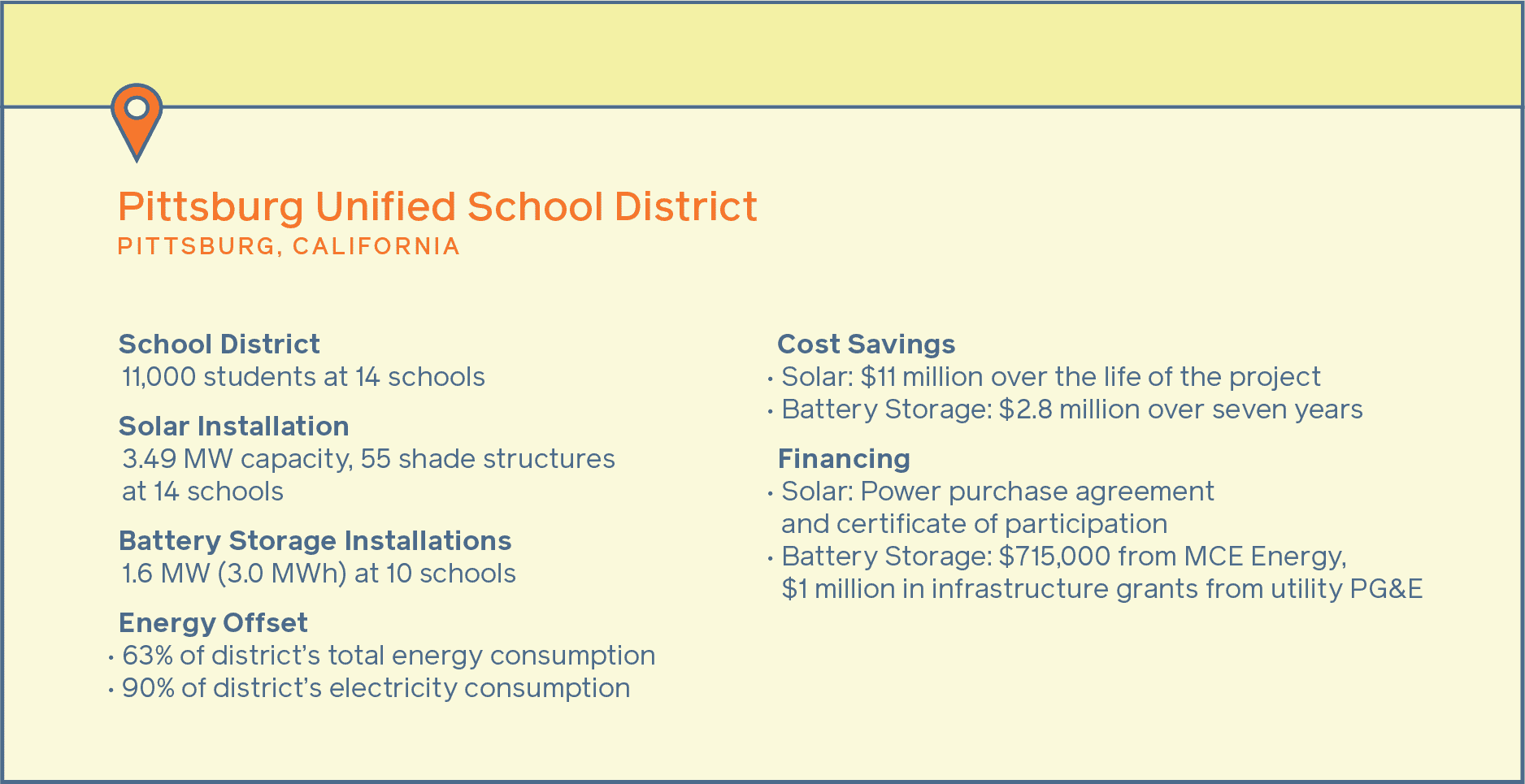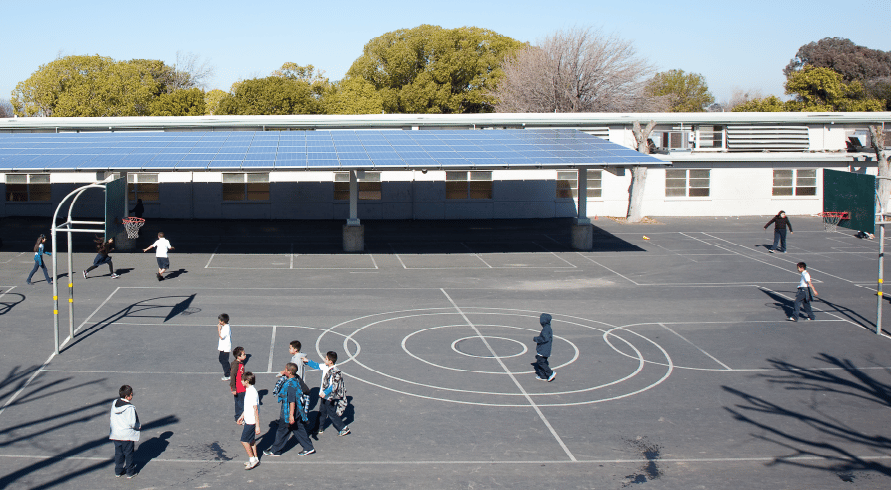This case study was originally published in the 4th edition of Brighter Future: A Study on Solar in U.S. Schools (2022).
Pittsburg, California, located about 40 miles east of San Francisco, was historically known as Black Diamond, a nod to the nearby coal resources that supported the town’s economy. However, Pittsburg’s reliance on coal is shifting, and Pittsburg Unified School District (PUSD) is building a new reputation for the community as a leader in sustainability.
According to Superintendent Dr. Janet Shulze, PUSD’s success in transitioning to clean energy can be attributed to institutionalizing their goals and commitments at the school board level. In 2018, green school operations and energy and environmental resource management were codified as board policies. These policies hold PUSD leadership and staff accountable for meeting clean energy and sustainability goals, ensure that sustainability remains a priority regardless of changes in leadership, and help maintain a culture that supports implementing innovative clean energy projects.
PUSD’s clean energy efforts took off in 2011 with solar installations at 12 district campuses and its support center. With 3.49 MW of solar online, PUSD generates 90% of its electricity consumption from the sun. The solar installations are helping PUSD avoid energy costs of over $1 million per year, with lifetime cost savings of over $11 million. The district is now designing a new building for Parkside Elementary School that will become its first zero-energy school.
Transitioning to an electric vehicle (EV) fleet is another component of PUSD’s clean energy commitment. When Matthew Belasco, Director of Maintenance, Operations, and Transportation, assumed leadership of PUSD’s transportation department in 2017, he developed a plan to electrify its fleet of vehicles and school buses.
“When I watched the buses leave each day with big plumes of black smoke billowing out the back, it reminded me of seeing the same thing as a kid. I knew we could do better for our students. That really motivated me to electrify our fleet.”
Belasco secured funding for the first two electric school buses using a combination of grants and district money and leveraged PG&E’s pilot EV incentive program to cover costs for charging infrastructure. Currently, PUSD’s fleet includes four electric school buses and six EVs for student transportation and staff use. Belasco anticipates adding three more electric school buses in the fall of 2022. PUSD has also applied for grant funding to install 32 chargers at five schools to encourage staff to drive EVs. An additional 18 chargers at three more schools are expected to come online by the end of 2022.
Soon after Belasco began electrifying the fleet, he started to research battery storage. When he learned about how batteries can reduce energy costs by discharging power during peak load times and also provide backup power during grid outages, he was sold. “While we haven’t experienced any shutdowns due to grid failure, it can’t hurt to be over prepared. The ability to keep our schools open and running during a power failure ensures that there are no disruptions to teaching and learning.”
PUSD’s battery storage system is expected to be online in December 2022. The system will include 1.6 MW of a combination of two- and four-hour lithium batteries for a total of 3.0 megawatt-hours at 10 district campuses. As an early adopter, PUSD is able to take advantage of financial incentives offered through power delivery company MCE Energy and $1 million in energy infrastructure grants from PG&E. Models show PUSD could save $78,000 per year and an additional $50,000-$70,000 in incentives for the first five to seven years of operation.
PUSD’s districtwide commitment to sustainability is getting noticed. Several nearby school districts have visited to learn about its clean energy initiatives. In recent years, PUSD has been named a Green Ribbon School District with Gold Distinction by the California Department of Education and received leadership awards from Green California Schools and Community Colleges.
“My advice to other districts is to codify your sustainability practices and commitments as school board policy,” says Dr. Schulze. “Doing this gives staff the directive and encouragement to press forward and ensures these practices continue, regardless of changes in district leadership.”

















